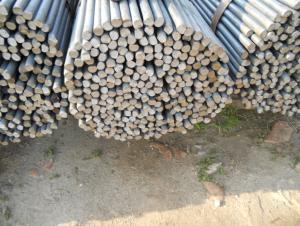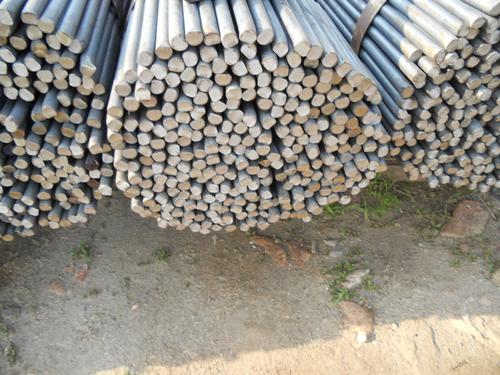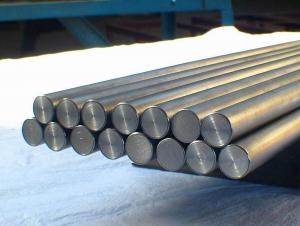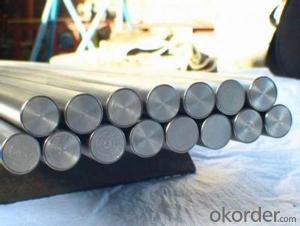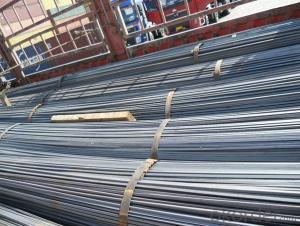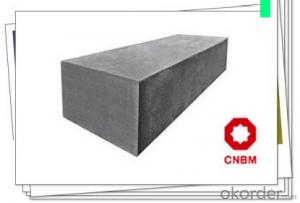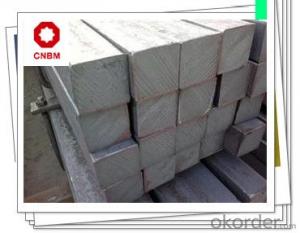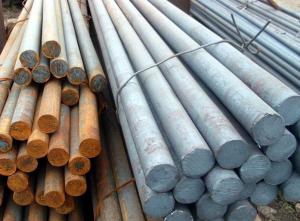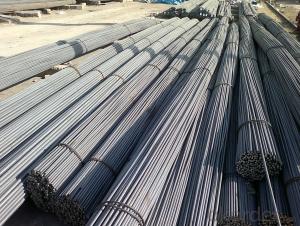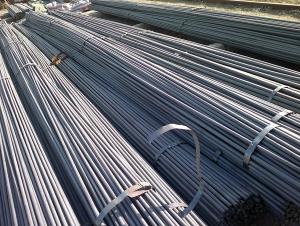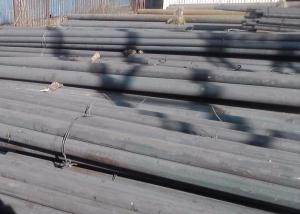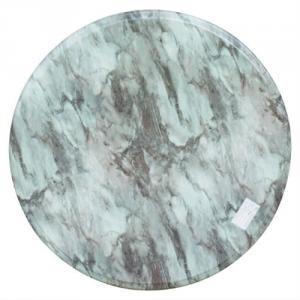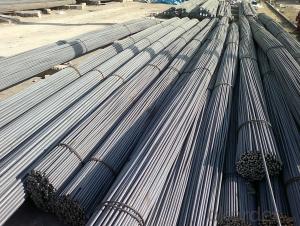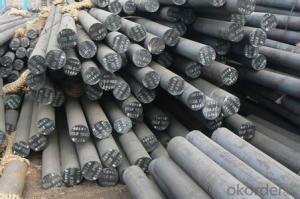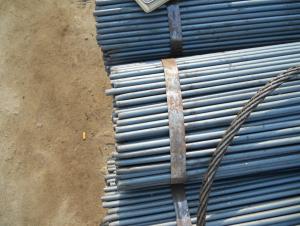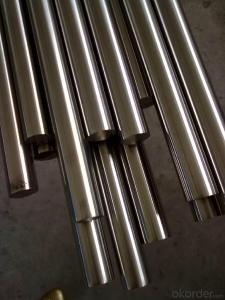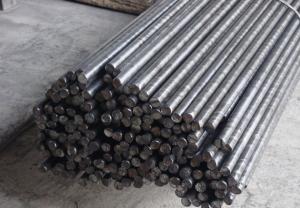Round bar
- Loading Port:
- China Main Port
- Payment Terms:
- TT OR LC
- Min Order Qty:
- -
- Supply Capability:
- -
OKorder Service Pledge
OKorder Financial Service
You Might Also Like
Wire Rod Q235 Details:
| Minimum Order Quantity: | 25 Tons | Unit: | m.t. | Loading Port: | XINGANG PORT,China |
| Supply Ability: | 100,000 Tons Per Month | Payment Terms: | TT or LC |
Product Description:
Specifications of Wire Rod Q235:
Steel Grade: Q235, Standard: GB Diameter: 5.5mm, 6.5mm, 7mm,8mm,9mm,10mm,12mm,14mm
Diameter Tolerance:±0.3mm 6.5mm can be drawing into 2mm/8.0mm can be drawing into 3mm
Brand Name: N-RIVER Place of Origin: Hebei, China Mainland Application: construction, building etc
Chemical Composition:
Please kindly find our chemistry of our material based on Q235 as below for your information
Trademark | Rank | Chemical composition (quality score) % | |||||
C | Si | Mn | S | P | |||
| ≤ |
| ≤ | ≤ | |||
Q235 | A | 0.14-0.22 | 0.30 | 0.30-0.65 | 0.050 | 0.045 | |
Q235 | B | 0.12-0.20 | 0.30 | 0.30-0.70 | 0.045 | 0.045 | |
Trademark | Rank | Pulling Test | |||||
Bend PointΔs/Mpa | Tensile Strength | Elongation Ratioδ5% | |||||
Thickness (Diameter) /MM | Thickness (Diameter) /MM | ||||||
≤16 | 16-40 | ≤16 | 16-40 | ||||
≥ | ≥ | ||||||
Q235 | A | 235 | 225 | 375-500 | 26 | 25 | |
Q235 | B | 235 | 225 | 375-500 | 26 | 25 | |
Usage and Applications of Wire Rod Q235:
After hot-rolled the products shaped into coil and delivery as finished product, including round, square, rectangular, hexagonal and so on. Since most of the products are round, it is generally called wire rod. Carbon steel wire rod is widely used in construction and manufacturing. Carbon steel wire rod is mainly used for reinforcement of reinforced concrete and welded structure or reprocessed (roberts , nail, etc.) materials, especially used to produce wire drawing, welding electrode, nails, spring, electronic, precise machinery parts and so on.
Packaging & Delivery of Wire Rod Q235:
Packaging Detail: products are packed in coil and then shipped by container or bulk vessel
Each coil weight: 2-3MT
Delivery Detail: within 45 days after received deposit or LC.
Label: to be specified by customer, generally, each bundle has 1-2 labels
Trade terms: FOB, CFR, CIF
- Q: Are steel round bars resistant to fire?
- With their high resistance to fire, steel round bars exhibit exceptional fire-resistant properties owing to their high melting point and low thermal conductivity. In the occurrence of a fire, steel round bars do not readily ignite or combust. Moreover, steel maintains its structural integrity even under extreme temperatures, rendering it a favored selection for construction materials in areas susceptible to fires. As a result, steel round bars prove to be a dependable and secure choice for a range of applications, encompassing building structures, industrial equipment, and fire-resistant barriers.
- Q: How are steel round bars used in the construction of high-rise buildings?
- Steel round bars are commonly used in the construction of high-rise buildings as they provide structural support and reinforcement. These bars are used in various applications such as columns, beams, and foundations to enhance the overall strength and stability of the structure. Additionally, steel round bars provide flexibility in design, allowing for efficient load distribution and resistance against external forces such as earthquakes and high winds.
- Q: Special steel bar steel products used to do what
- Carbon tool steel is high carbon steel basically contains alloy elements, the carbon content in the range of 0.65% ~ 1.35%, the production of low cost, easy to obtain raw materials, good machinability, after treatment can obtain high hardness and high wear resistance, so it is widely used in steel, used to manufacture all kinds of cutting tools, mold, measuring.
- Q: What are the advantages of using niobium-alloy steel round bars?
- There are several advantages to using niobium-alloy steel round bars. Firstly, niobium-alloy steel has excellent strength and toughness properties. The addition of niobium to the steel increases its strength while maintaining its ductility, making it ideal for applications that require high strength and durability. This allows niobium-alloy steel round bars to withstand heavy loads and shocks without deforming or breaking easily. Secondly, niobium-alloy steel has a high resistance to corrosion. This makes it suitable for use in harsh environments where exposure to moisture, chemicals, or corrosive substances is common. The corrosion resistance of niobium-alloy steel ensures that the round bars will remain intact and retain their structural integrity over time, reducing the need for frequent replacements and maintenance. Additionally, niobium-alloy steel has excellent weldability and formability. It can be easily welded and fabricated into various shapes and sizes, making it adaptable to different manufacturing processes and applications. This versatility allows for the production of custom-designed round bars that meet specific project requirements. Moreover, niobium-alloy steel has good heat resistance properties. It can withstand high temperatures without losing its strength or undergoing significant changes in its mechanical properties. This makes it suitable for applications that involve exposure to extreme heat or thermal cycling, such as in the aerospace or automotive industries. Furthermore, niobium-alloy steel is known for its excellent fatigue resistance. It has a high endurance limit, which means it can withstand repeated loading and unloading cycles without experiencing fatigue failure. This makes niobium-alloy steel round bars ideal for applications that involve dynamic or cyclic loading, such as in structural components or machinery. In conclusion, the advantages of using niobium-alloy steel round bars include high strength, corrosion resistance, weldability, formability, heat resistance, and fatigue resistance. These properties make niobium-alloy steel a reliable and cost-effective choice for various industries and applications.
- Q: Can steel round bars be used in the manufacturing of electrical components?
- Yes, steel round bars can be used in the manufacturing of electrical components. Steel is a versatile material that offers excellent strength and durability, making it suitable for various applications, including the production of electrical components. Steel round bars can be used as connectors, terminals, or brackets in electrical devices and equipment. They provide stability, support, and protection to the electrical components, ensuring their proper functioning and longevity. Additionally, steel can be easily machined, welded, and shaped, allowing manufacturers to customize the round bars according to the specific requirements of the electrical components. However, it is important to note that steel round bars may need to be properly insulated or coated to prevent any electrical conductivity or interference, depending on the specific application and environment in which they are used.
- Q: Can steel round bars be painted or coated?
- Yes, steel round bars can be painted or coated. Painting or coating steel round bars is a common practice to enhance their appearance, protect them from corrosion, and provide additional functionality. The process typically involves cleaning the surface of the bars to remove any dirt, grease, or rust, and then applying a primer or base coat followed by a topcoat or finish. The type of paint or coating used will depend on the specific requirements of the application, such as the desired color, level of protection, or resistance to environmental conditions. Additionally, certain coatings can provide specific properties like anti-slip, heat resistance, or chemical resistance. Overall, painting or coating steel round bars is an effective way to improve their aesthetics and durability.
- Q: What are the different grades of steel round bars available?
- There are various grades of steel round bars available, each with different properties and applications. Some common grades include: 1. Mild Steel: This grade is the most commonly used and affordable option. It has a low carbon content and is easy to weld, cut, and form. Mild steel round bars are suitable for general construction projects, fabrication, and manufacturing. 2. Carbon Steel: With a higher carbon content than mild steel, carbon steel round bars offer greater strength and hardness. They are often used in applications that require high strength, such as machinery parts, shafts, and axles. 3. Alloy Steel: Alloy steel round bars are made by adding various alloying elements such as chromium, nickel, manganese, or molybdenum to improve specific properties. These bars offer enhanced strength, toughness, and wear resistance, making them suitable for applications like automotive parts, gears, and tools. 4. Stainless Steel: Stainless steel round bars are corrosion-resistant and have excellent mechanical properties. They are widely used in industries such as construction, food processing, and medical equipment manufacturing. Different grades of stainless steel, such as 304, 316, or 410, offer varying levels of corrosion resistance and strength. 5. Tool Steel: Tool steel round bars are specifically designed for making tools and dies. They have high hardness, wear resistance, and heat resistance properties. Tool steel grades like D2, A2, or O1 are commonly used for making cutting tools, molds, and dies. It's essential to select the appropriate grade of steel round bars based on the specific requirements of your project, considering factors such as strength, corrosion resistance, hardness, and machinability. Consulting with a steel supplier or an engineer can help identify the most suitable grade for your application.
- Q: Can steel round bars be used for making exercise equipment?
- Yes, steel round bars can be used for making exercise equipment. Steel round bars are known for their durability and strength, making them suitable for constructing various types of exercise equipment. They can be used to create weightlifting bars, dumbbells, barbells, and other fitness equipment that require sturdy and reliable materials. Additionally, steel round bars can be easily machined, welded, and shaped into different forms, allowing for customization and versatility in exercise equipment design. The use of steel round bars ensures that the exercise equipment can withstand heavy loads and provide stability during workouts, making them a popular choice among gym equipment manufacturers and fitness enthusiasts.
- Q: What is the tolerance for diameter and length of steel round bars?
- The tolerance for diameter and length of steel round bars can vary depending on the specific industry standards and requirements. Generally, the acceptable tolerance for diameter can range from +/- 0.005 to 0.010 inches, while for length it can range from +/- 0.125 to 0.250 inches. However, these tolerances can be more stringent or relaxed depending on the intended application and customer specifications.
- Q: What is the maximum length of a steel round bar available?
- The maximum length of a steel round bar available depends on various factors such as the manufacturing capabilities of the steel supplier, transportation limitations, and practical considerations. However, typical maximum lengths range from 20 to 40 feet (6 to 12 meters), but it is always best to consult with a steel supplier to determine the specific lengths they offer.
Send your message to us
Round bar
- Loading Port:
- China Main Port
- Payment Terms:
- TT OR LC
- Min Order Qty:
- -
- Supply Capability:
- -
OKorder Service Pledge
OKorder Financial Service
Similar products
Hot products
Hot Searches
Related keywords
